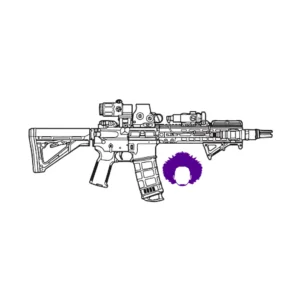The Draw Stroke: Cutting Your Reaction Time in a Gunfight

Imagine you’re walking to your car late at night when a figure suddenly emerges from behind a van, closing distance fast. Your mind races to process the threat, but before you can even clear cover on your firearm, the attacker is already within striking distance. In real-world encounters, the difference between living and dying often comes down to fractions of a second—and nothing shaves time off your response like a fast, efficient draw stroke. Gunfights aren’t won with fancy reloads or stance mechanics; they’re won in the first engagement. If your draw is slow, sloppy, or inefficient, you may never get to fight at all.
The draw stroke is one of the most overlooked fundamentals of real-world gunfighting. While range shooters focus on tight shot groups and competition drills, true self-defense scenarios unfold at a speed that demands absolute proficiency in getting the gun out and on target. John Lovell of Warrior Poet Society emphasizes that “the fight starts before you decide to shoot,” reinforcing that hesitation or fumbling during the draw phase can be fatal. Operators like Kyle Defoor and Pat McNamara, both with extensive military special operations backgrounds, stress that a refined draw stroke isn’t just about speed—it’s about efficiency, repeatability, and the ability to deploy your weapon under duress. If your muscle memory fails during an adrenaline dump, your reaction time will suffer, and you’ll lose precious seconds you don’t have.
To break it down, the perfect draw stroke is a four-step process that should be ingrained into muscle memory. First, your firing-hand grip must establish a full fighting purchase on the weapon while it is still in the holster—this ensures you aren’t adjusting or repositioning mid-draw, which costs time. Second, the weapon must be cleared from the holster in a straight, efficient path with no excessive motion—any wasted movement translates to more time before your muzzle is on target. Third, as the gun is brought up to your chest or sternum area, your support hand must mate with the frame in a unified grip, preventing unnecessary separation or hesitation. Lastly, you drive the gun forward, achieving full presentation as your sights settle where your vision is already looking. The key isn’t simply mechanical execution—it’s flawless consistency under stress.
One of the biggest mistakes shooters make is focusing on speed before efficiency. A common pitfall is the “bowling” or “casting” draw, where the gun is flung forward in an arc instead of coming up in a controlled line. This not only slows down target acquisition but also puts you at a disadvantage in close-quarters scenarios. Another mistake is failing to grip the gun properly from the holster; if you lose your master grip in step one, you’ll fumble the entire draw sequence. Additionally, many shooters rush to get the gun forward while neglecting economy of motion—this leads to unnecessary movement that increases time to first shot. Experienced instructors like Travis Haley harp on the importance of tactile indexing and repeatability, ensuring that every movement has a purpose and nothing is done out of unnecessary habit. Training bad reps will only create bad responses when it matters most.
Choosing the right holster setup is equally vital to success.
A cheap, flimsy holster that collapses on itself or doesn’t retain the gun properly will cost you time and potentially jeopardize the entire fight. Kydex or hybrid holsters that offer a rigid structure with proper retention, like those from Tier 1 Concealed or Tenicor, provide the reliability necessary for an optimal draw stroke. Your belt selection also plays a major role; a sturdy gun belt from companies like Blue Alpha or Ares Gear will prevent sagging or shifting, keeping your holster in the exact position needed for consistent access. Fro Daddy Tactical carries a selection of high-quality holsters and belts designed for real-world defensive applications—invest in the right gear and eliminate self-inflicted disadvantages from the start.
At the core of every successful defensive shooting encounter is the ability to get the gun into play before the fight is over. The difference between drawing in 1.5 seconds versus 2.5 seconds can determine whether your assailant is incapacitated or whether you even get to pull the trigger at all. Training repetition is critical—dry-fire practice, shot timer drills, and scenario training that incorporates movement and decision-making will forge the reflexive response you need under stress.
If you take self-defense seriously, your draw stroke is a skill you cannot afford to neglect. Train with intent, refine your process, and shave every fraction of a second possible off your reaction time. Whether you’re carrying daily for personal protection or preparing for the unknown, efficiency in weapon deployment is non-negotiable. Check out Fro Daddy Tactical’s selection of battle-tested holsters, belts, and concealed carry gear to ensure your equipment matches the level of skill you’re building. Don’t just carry—be ready.
Comment to let us know what you’d like to see in the Tactical Blog next!

Your trusted source for top-tier firearms, self-defense gear, and tactical equipment. Protect what matters most.
